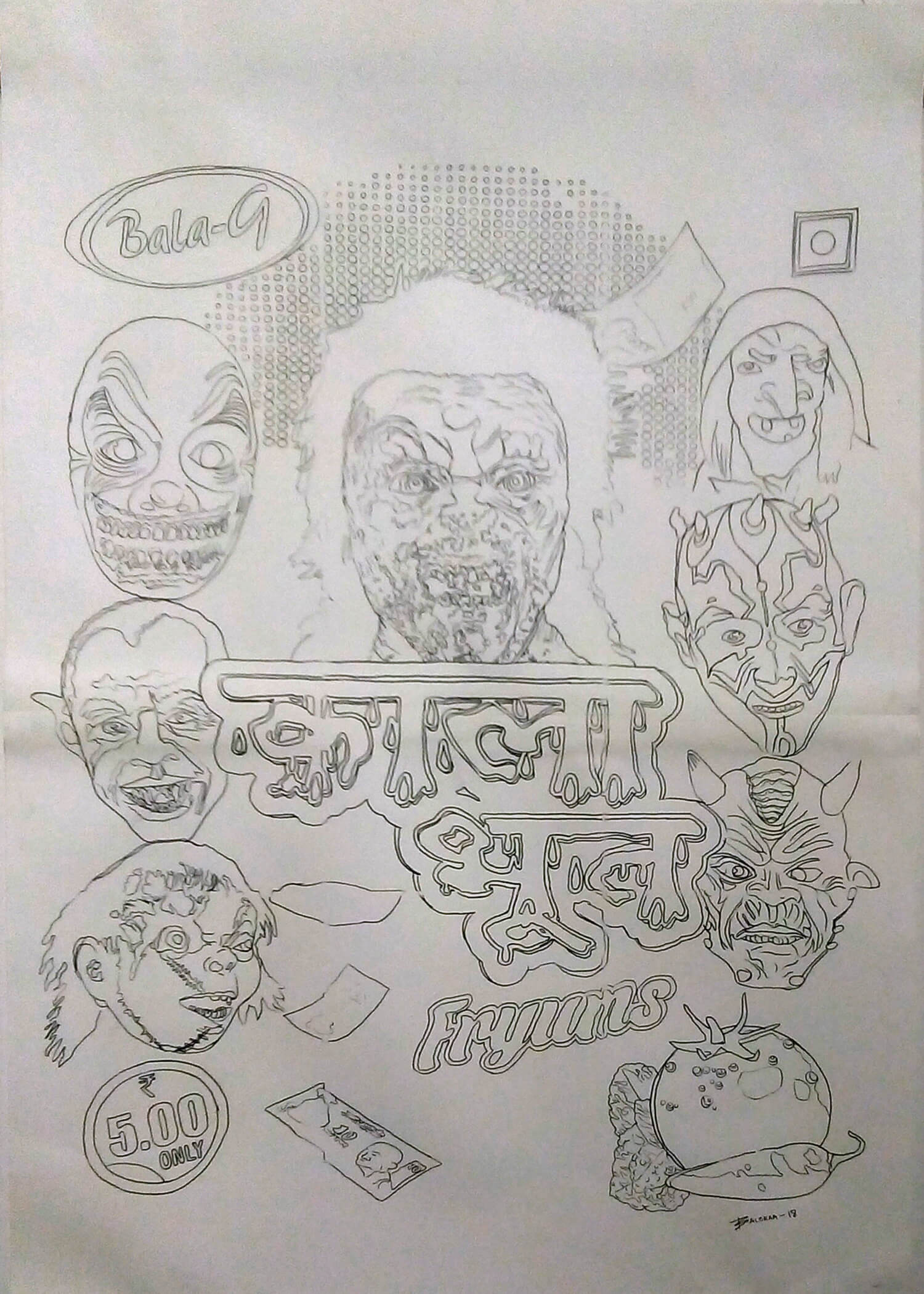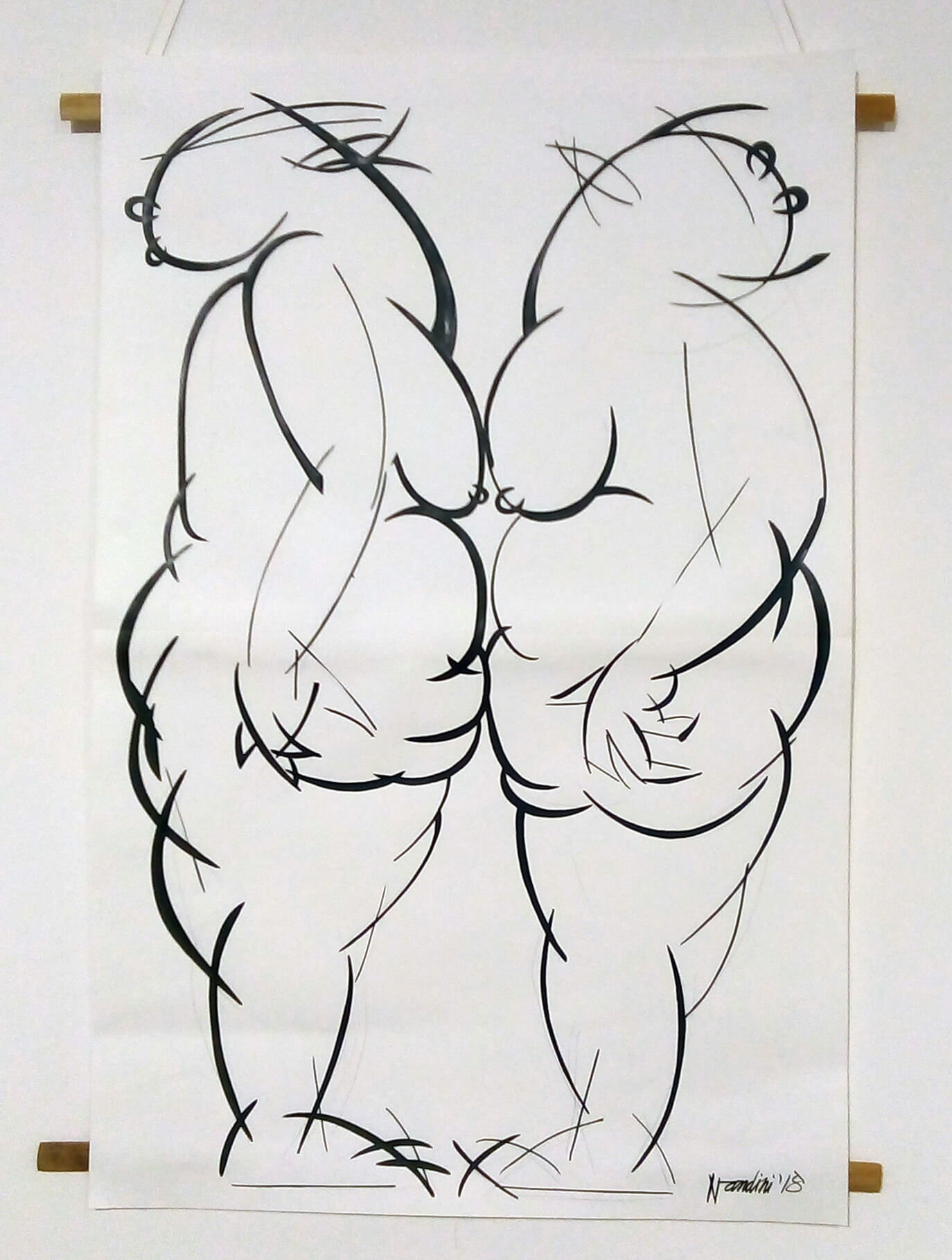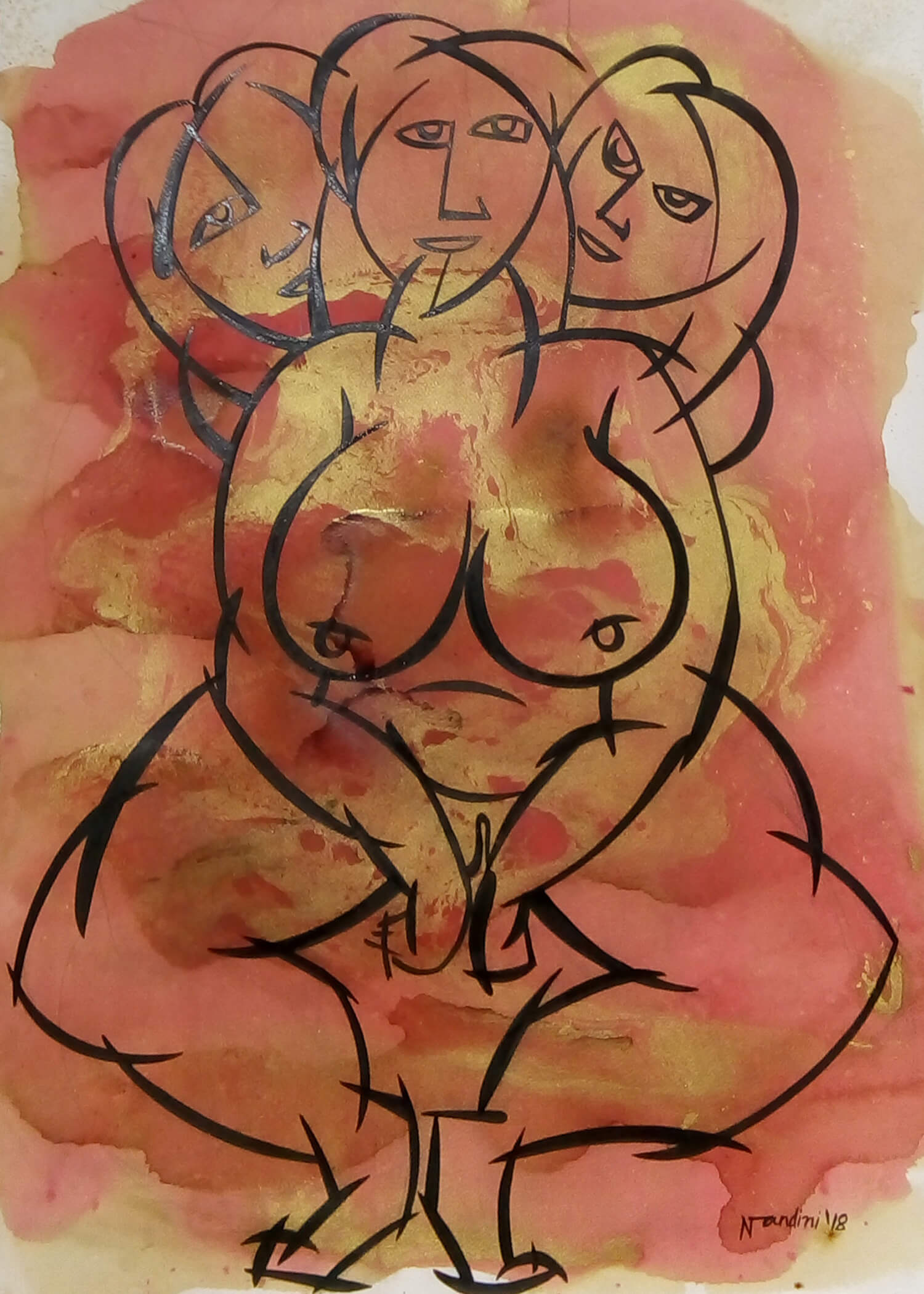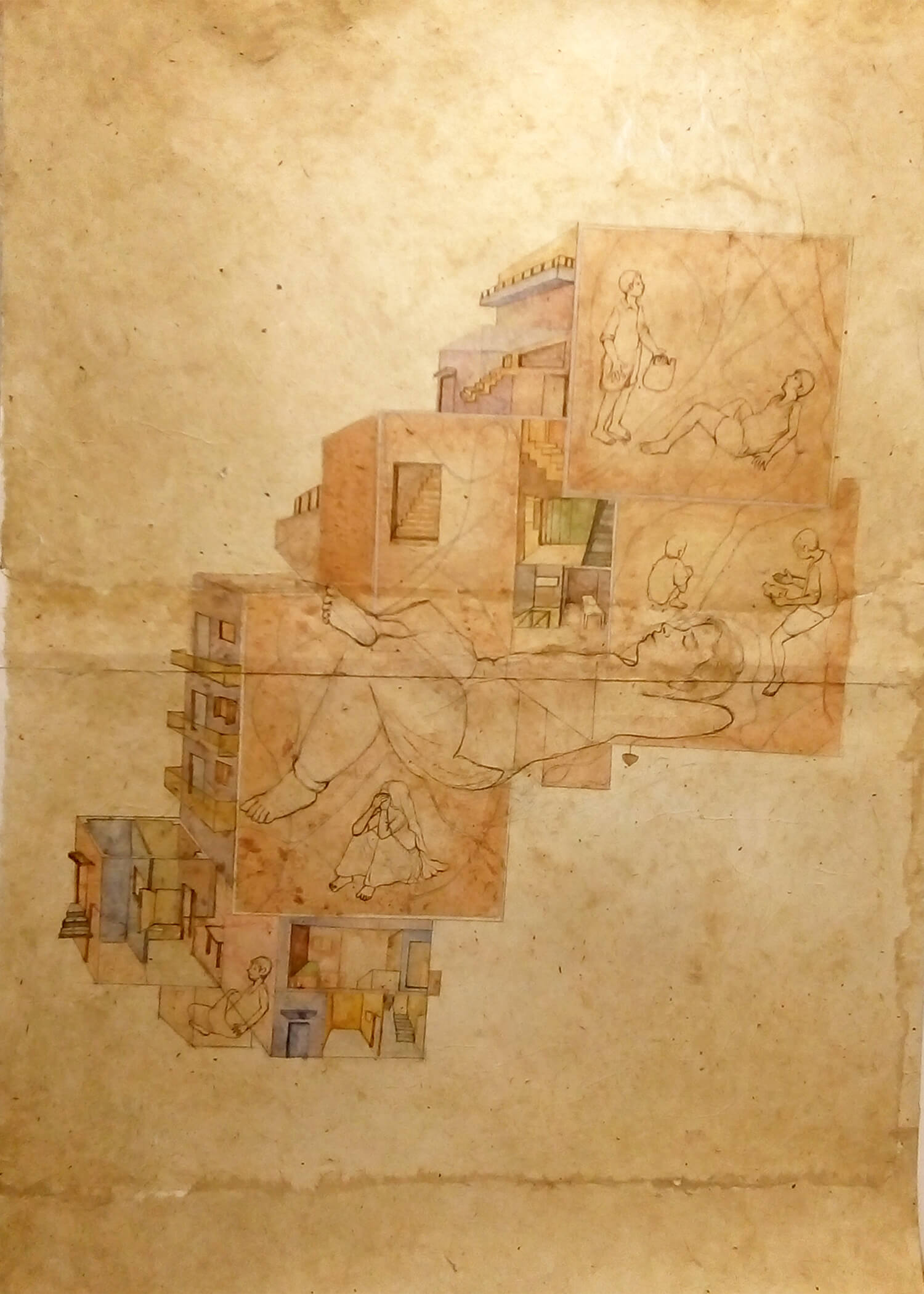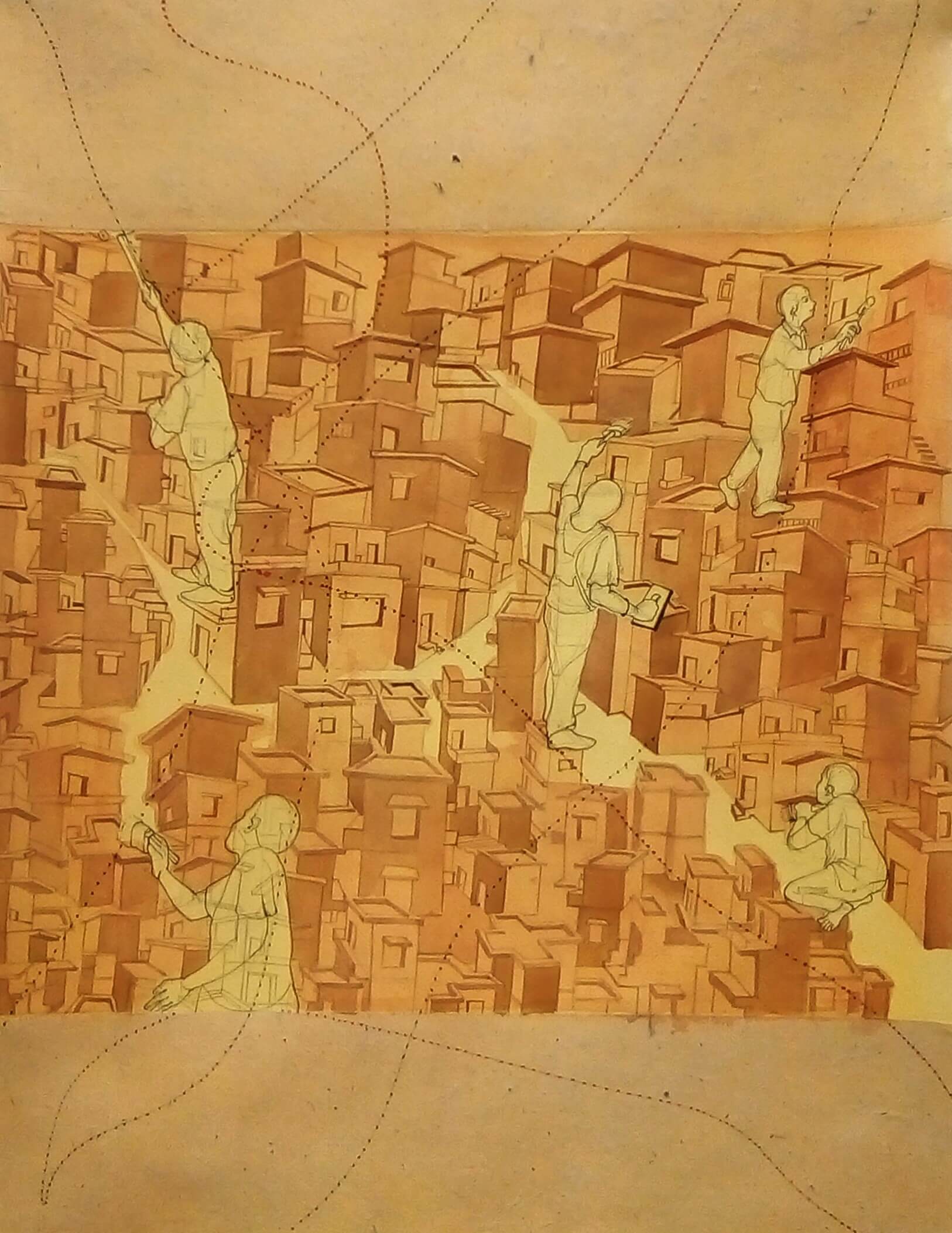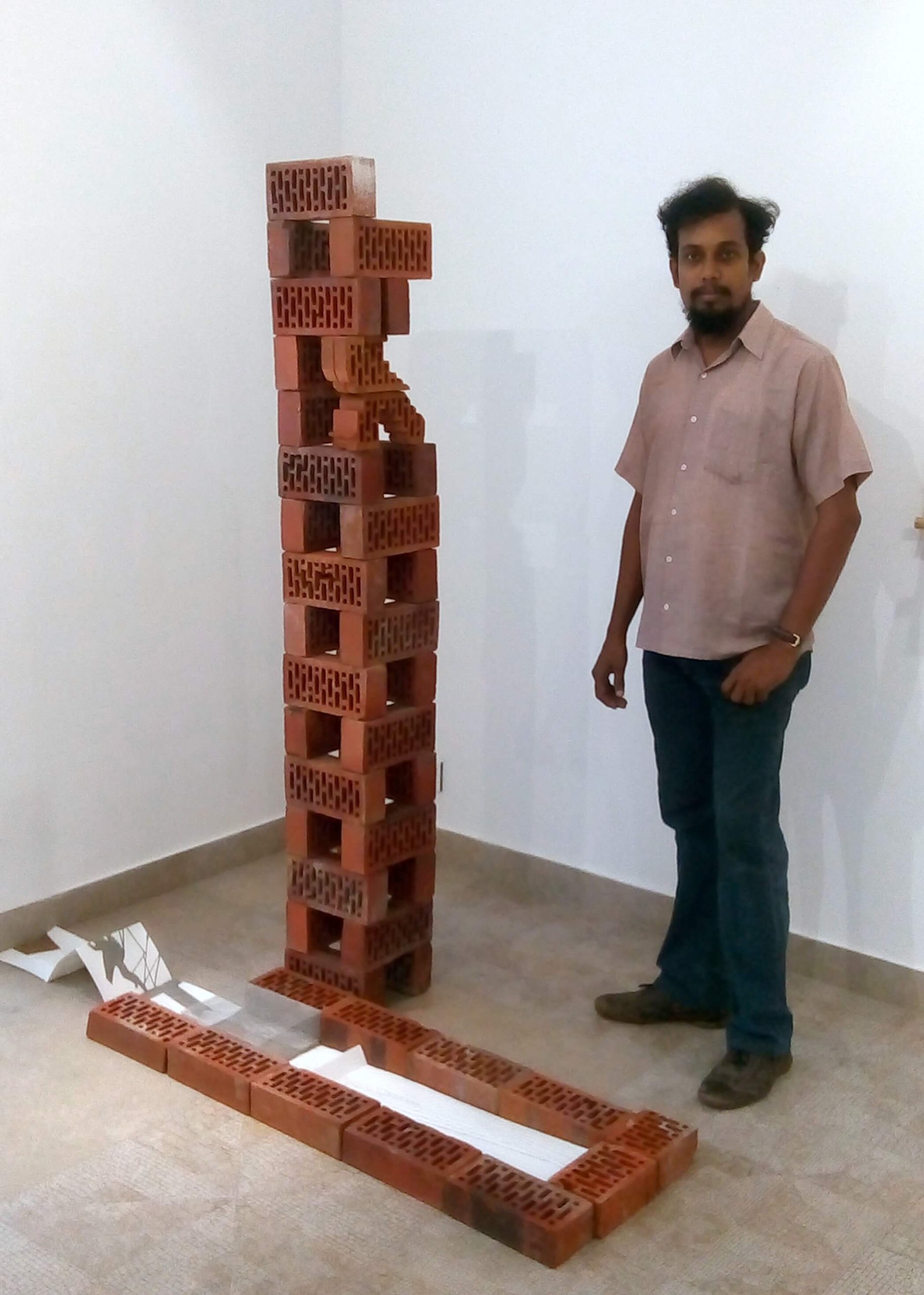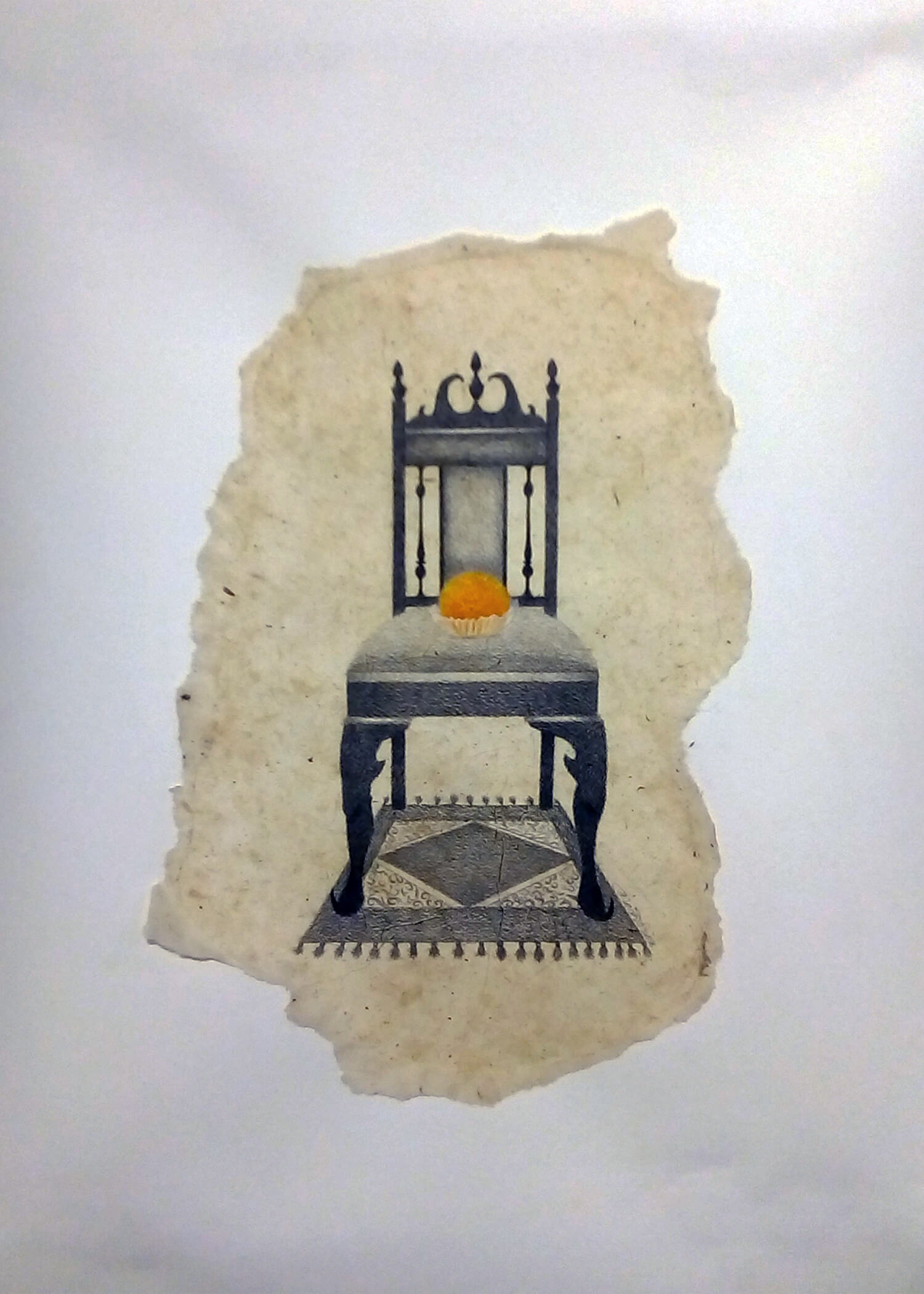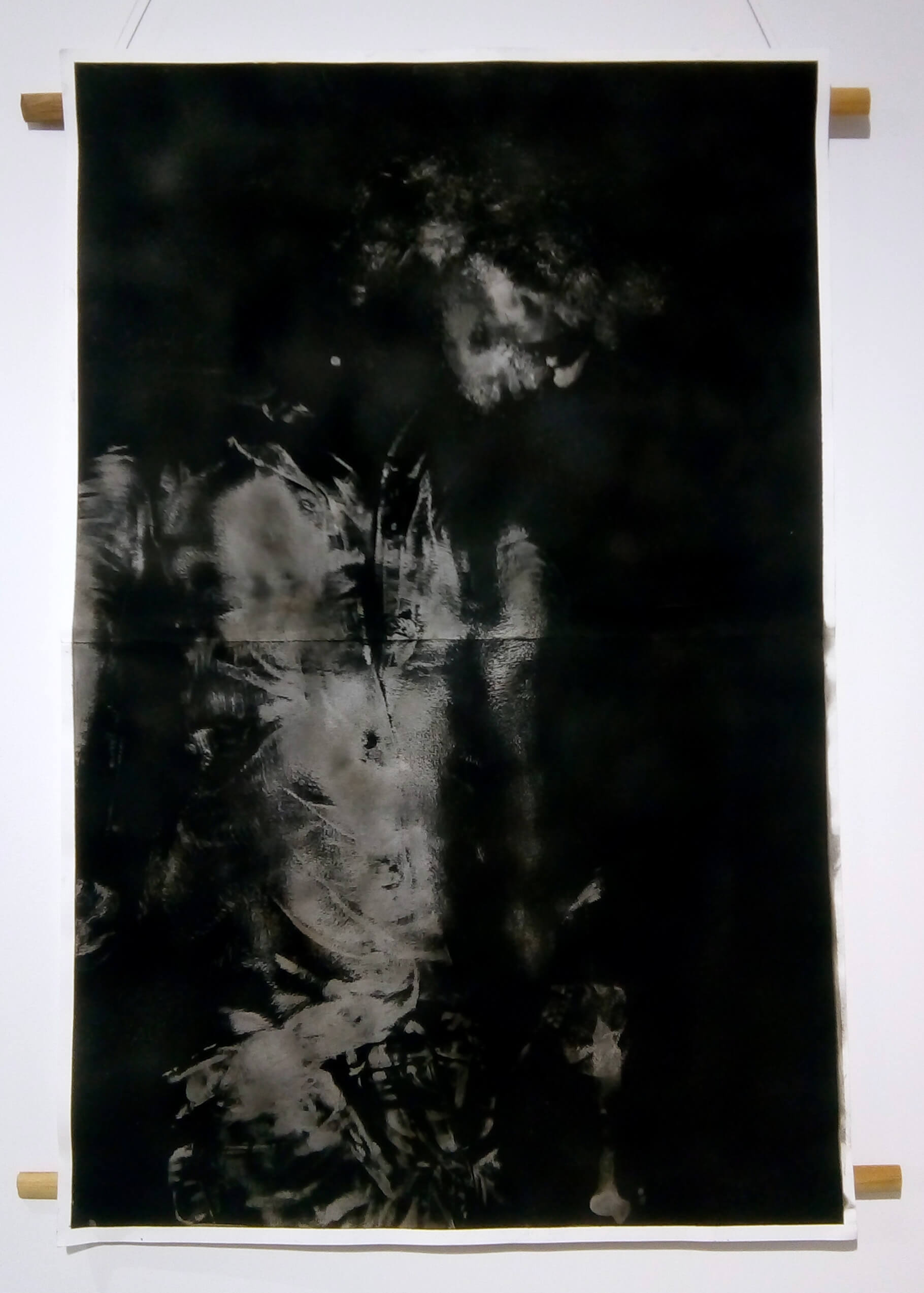Exposè – Lines and Distance08-09 SEPTEMBER 2018
Drawing Workshop
Line is one of the most fundamental elements in a work of art. It is the beginning point for any artistic creation and can be described as its extension. On the basis of activity involved it is comprehended with words like separation, divide, boundaries and partition. It is only when one observes them from a distance that they are able to identify its relationship with space. The amalgamation of line with distance, hence enable an individual to recognize the potential of varied elements in a work of art in association with the overall form. We tried to explore these perceptions in this workshop. It focuses on unravelling the following aspects of the artists’ works:
- The meaning and role of line in their practice?
- How distance is dealt in their work?
Baloram Debnath
Kala Bhoot
He often looks for various kinds of kitsch, popular images in street shops, bazaars and various other places. His work derives from this long-term interest in such images. The printed visuals are from the low cost product packaging works as a resource for the paintings. Often these packages comes with vibrant and provoking kitsch images- superheroes, titillating images of models/actresses, Gods and goddesses, demons, animals & birds. They are mostly arbitrarily and ambivalently used with a clear intention of attracting the consumers’ attention. Eventually it creates an interesting layered psychological relationship between the image and the brand name and then to the consumer’s perception.
Interesting texts and tags (murga chap, karishna steel, kala bhoot etc.) often come up with the images that also creates different kitsch sensibilities. His works tries to play around with these images and texts with certain individual interventions of my own. The process behind collecting and translating those images is the core of my work, where different layers of psychological and visual perception plays.
Nandini Sarkar
3 headed lady
The She Me n me
Nandini works in various mediums according to the subject matter of her painting or drawing. Currently, she is working on female figures in respect to the representation of women’s mood, body postures, feelings, thinking in their daily life which she has been portraying in her drawings as well as paintings. Sometimes they are stylized; more than so called anatomical drawings. She feels free to explore the female figure through drawings as it reflects her subconscious mood clearly. She mostly draws the figures from live models in different poses and also from the imagination too. What she likes most in female figure drawing is as the form of a woman is incredibly complex which helps her to choose the typical characters, curves, lines and many more things of the body. It’s also about the movement, the weight, balance and tension. Woman is the main subject in her art works. She usually goes around, meets different people from where she reads the basic need for her paintings. Her work also adds some other objects with the figure to create a bonding or relation in respective art works.
Sahailee
Untitled
When an individual wants a house or building to be constructed, a raj mistiry is contacted, given an idea, he is a master craftsman and construction supervisor. In this work Sahailee has self-consciously explored the personal space and common space created during the construction process. It explores the personality of the workers, who have immense knowledge of construction. It is a composition in an urban settings and reflects on the architectural space of the buildings by focusing on the basic geometrical shapes. It is an interaction between built spaces and humans.
Santanu Dey
Untitled
In present times the real problem of space implies environment issues. In developing countries, the adjustment to modern ways is problematic and consequently of major concern in Santanu’s work. Multinational companies and our high rate of demand have made a great impact on our urban landscapes as well as rural landscape. We comfort our life more day by day and that’s why we use natural resources at unplanned way. Santanu has given emphasis on work to combining drawing with readymade and thrown-away objects. As a result, unwanted objects collected from here and there, or objects used for other purposes, are juxtaposed with his work.
His work focuses on the constant construction, [de]construction and [re]-construction of the environment negotiations in the new constantly changing urban atmosphere.
Vinit Nakoti
Untitled
Vinit always had a fascination with objects, their silence and solitary essence has allured him towards them. He believes that even though they are non-living entities they do become a part of an environment and thus imbibe their own personal experience and perception. For me these objects breathe air like and they get affected by happenings around them like we do, they too have their own life, values, personal space and ego. Though practically we cannot hear or comprehend what they experience, as an artist he tries to resonate with them and makes efforts to connect with their feelings.
The basic idea behind this work comes from a past experience that he encountered. It made him question the very idea of how people look at objects even though they incorporate them in their sacred rituals. He realized that any object was significant till it was a part of the process or a ritual. Here, he has explored the idea of one of the very commonly used sweet in the Hindu tradition called the Laddu.
Yashwant Singh
Untitled
Yashwant’s practice involves his body as a material and tool in his works. He is in constant search of identifying his body in his work and the related politics of his figure. By extension it becomes an inquiry into self and the times this self cohabits with others. His work mainly involves body prints on paper with the help of soot (lamp black).
He uses his body in different postures and with different materials. Anxieties, desires and the bodily pleasures are not distant anymore and are common in his works. Repetitiveness is constant in his process and yet it is not the same. Now he uses this process as a performative or exhibitionistic by doing it when others are present.

